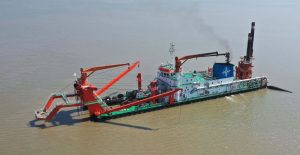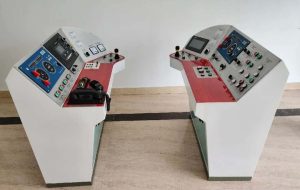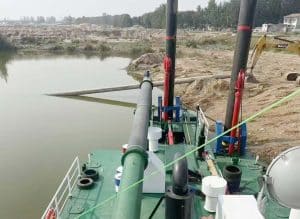| Parameter | Without Booster Station | With Booster Station |
|---|---|---|
| Maximum Discharge Distance | 1,000 ft (efficiency drops) | 4,000+ ft maintained efficiency |
| Production Rate Increase | Standard output | Up to 65 tons/hour increase |
| Main Pump Wear | High stress, frequent maintenance | Reduced wear, lower costs |
Quick Answer: A dredge booster station is a self-contained pumping unit that extends discharge distance by 300-400% while increasing production rates up to 65 tons per hour. These stations overcome pressure losses in long pipelines and reduce main pump wear.
What is a Dredge Booster Station?
A dredge booster station works as your dredging operation’s best friend. Think of it as a relay runner in a marathon – it takes the baton from your main dredge pump and carries the slurry much further than the original pump could manage alone.
Here’s what makes these stations so valuable: they’re self-contained pumping units designed specifically to assist main dredge pumps. Instead of forcing your primary pump to work overtime, the booster station steps in to handle the heavy lifting over long distances.
The primary function centers on extending discharge distance. Most dredging projects face a common problem – as pipeline length increases, efficiency drops dramatically. Without a booster station, your cutter suction dredger loses power fighting friction losses.
Furthermore, these stations play a crucial role in modern dredging operations by maintaining slurry velocity. When material moves too slowly through pipes, it settles and creates blockages. Booster stations prevent this costly problem.
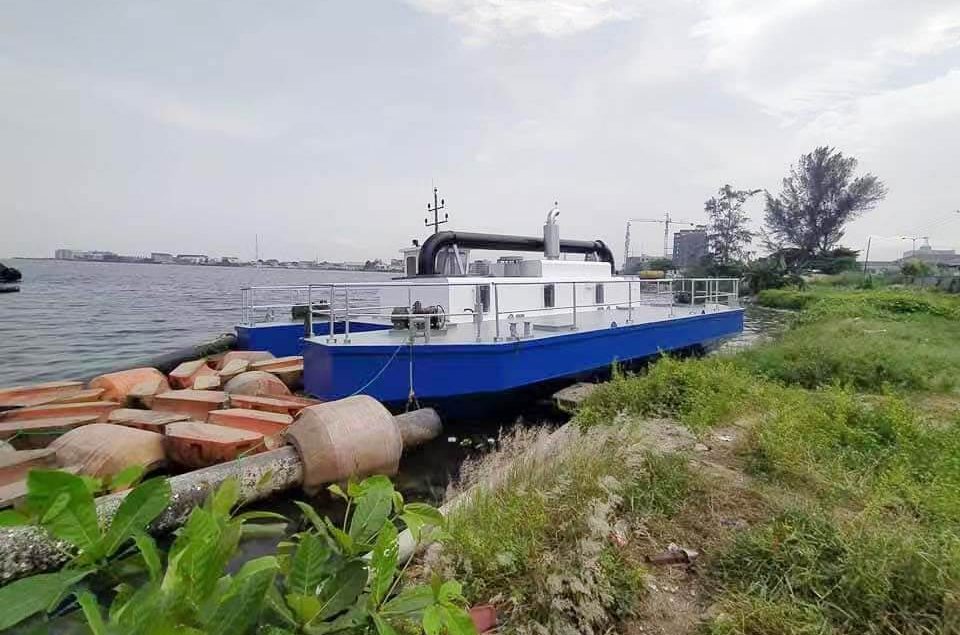
Modern dredge booster station mounted on pontoon for flexible deployment
How Does a Dredge Booster Station Work?
The magic happens through a carefully orchestrated process. Your booster station doesn’t work in isolation – it integrates seamlessly with your existing dredging setup.
Step one involves positioning the booster station strategically along your discharge pipeline. Most operators place these units at the point where pressure begins dropping significantly. This typically occurs around 1,000 feet from the main dredge.
Next, the station’s high-pressure pump kicks in to “boost” the pressure already generated by your main dredge pump. Think of it like adding another engine to your car when climbing a steep hill – both engines work together, not against each other.
The technical process works through pressure differential management. As slurry enters the booster station, sensors monitor flow rate and pressure. The station’s pump then adds exactly the right amount of additional pressure to maintain optimal velocity.
System coordination requires precise timing. The booster station must start up in a specific sequence with your main dredge. Chinese manufacturers have developed sophisticated “two-stage” coordination systems where the main ship and relay station communicate continuously.
Moreover, integration with discharge pipe systems requires careful planning. The booster station connects directly into your pipeline without disrupting flow patterns.
Types of Dredge Booster Stations
Not all booster stations look the same. Your project needs determine which type works best for your specific situation.
Land-based configurations use skid-mounted designs for permanent installations. These work perfectly when your discharge area stays in one location throughout the project. They’re easier to maintain and typically cost less to operate.
Floating configurations mount on pontoons for maximum flexibility. You can reposition these stations as your dredging progresses. They’re essential for projects where discharge points change frequently.
Amphibious designs represent the newest innovation. These stations feature pontoon-crawler chassis that move independently on both water and soft terrain. They use hydraulic propellers for water travel and tracks for land movement.
Single-stage systems handle most standard dredging projects. However, two-stage systems deliver significantly higher discharge pressures. For example, a single pump might generate 0.6 MPa pressure, while a two-stage system reaches 1.2-1.3 MPa for the same flow rate.
Power options split between diesel and electric systems. Diesel engines offer portability and work well in remote locations. Electric motors provide lower emissions and reduced operating costs where power is readily available.
Key Benefits of Using Booster Stations
The benefits go far beyond just pumping further. Smart operators use booster stations to transform their entire operation’s economics.
Extended discharge distance capabilities top the list. Without a booster station, efficiency drops dramatically beyond 1,000 feet. With one, you can pump effectively over 4,000 feet while maintaining production rates.
Production rate improvements deliver immediate returns. Industry data shows increases up to 65 tons per hour with optimal setup. This translates to significant annual revenue gains for commercial operations.
Additionally, reduced main pump wear cuts maintenance costs substantially. Your primary pump works less hard, which means fewer repairs and longer equipment life. This benefit alone often justifies the booster station investment.
Project feasibility improvements open new opportunities. Some projects become impossible without booster stations due to distance or elevation requirements. These stations turn “impossible” projects into profitable ones.
Operational efficiency improvements show up in unexpected ways. Operators report smoother operations, fewer blockages, and more consistent material flow with properly supported discharge systems.
Critical Selection Parameters
Choosing the right booster station requires careful consideration of several key factors. Get these wrong, and your station won’t deliver expected results.
Flow rate requirements come first. Your booster station must handle your dredge’s maximum output without creating bottlenecks. Most stations handle flow rates from 500 to 3,000 cubic meters per hour.
Discharge pressure needs depend on your specific pipeline configuration. Calculate total head loss including elevation changes, pipe friction, and fittings. Common discharge sizes range from 10 inches to 20 inches diameter.
Material characteristics significantly impact selection. Dense materials like sand require higher pressures than lighter silts. Coarse materials increase wear on pump components, requiring more robust designs.
Pipeline length and elevation factors determine how much boost you need. Longer pipelines need more pressure, while elevation changes add static head requirements.
Compatibility with your primary dredge system is crucial. The booster station must match your main pump’s characteristics for optimal performance. Mismatched systems create inefficiencies and potential damage.
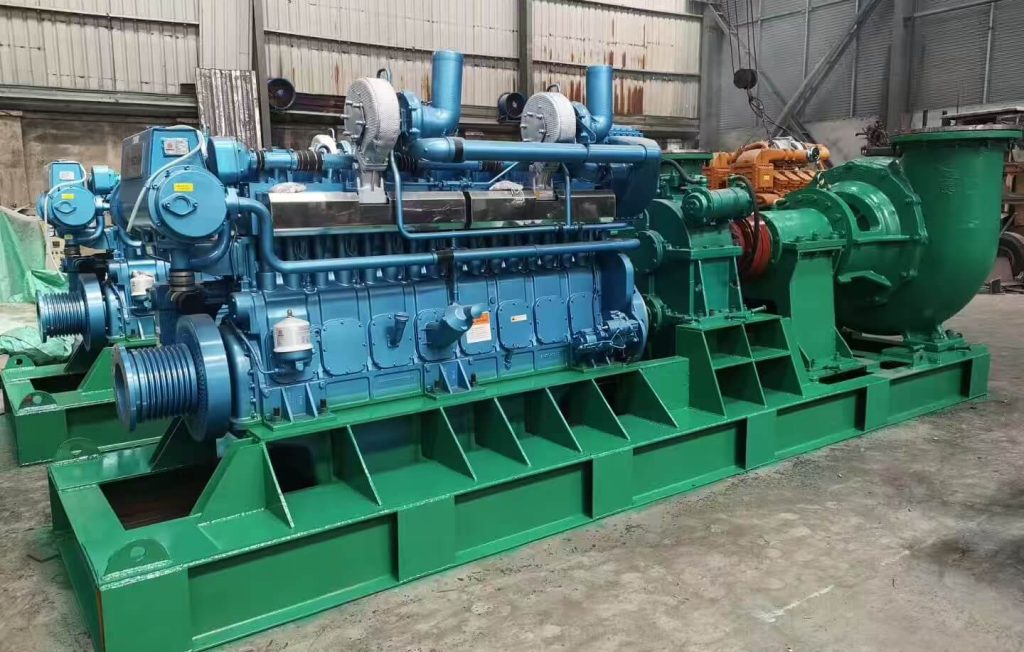
Performance Specifications and Data
Numbers don’t lie when it comes to booster station performance. Industry data reveals impressive capabilities across different configurations.
Common discharge sizes include 10″, 14″, 18″, and 20″ diameter options. Larger sizes handle higher volumes but require more power. Most commercial operations use 14″ or 18″ systems for optimal balance.
Typical efficiency improvements average around 75% with properly configured systems. This matches industry benchmarks for spud-style mooring systems combined with booster stations.
Production rate impact data shows significant gains. Increasing bank height from 3 feet to 8 feet with booster station support can raise production by 65 tons per hour. Over a full season, this translates to substantial revenue increases.
Pipeline friction loss comparisons reveal why booster stations matter. Doubling pipeline length from 1,000 to 2,500 feet without boosting can decrease production rates by 30-40%. With proper boosting, efficiency remains stable.
Performance varies with material density and particle size. According to industry research, coarse sands require 15-20% more pressure than fine silts for equivalent flow rates.
Maintenance and Operational Best Practices
Smart maintenance keeps your booster station running when you need it most. Skip these practices, and expensive downtime follows quickly.
Regular inspection requirements start before each operational shift. Check oil pressure, hydraulic temperature, and pump bearing condition. These simple checks prevent most catastrophic failures.
PLC monitoring and remote control systems provide real-time performance data. Modern systems alert operators to problems before they become serious. Monitor flow rate, discharge pressure, and engine parameters continuously.
Preventive maintenance schedules should follow manufacturer recommendations strictly. This typically includes daily fluid level checks, weekly oil sampling, and monthly comprehensive inspections.
Performance parameter monitoring helps optimize efficiency. Track fuel consumption, production rates, and wear patterns to identify improvement opportunities.
Emergency shutdown procedures require special attention. Booster stations must coordinate with main dredge operations to prevent pipeline blockages or pressure surges. Practice these procedures regularly with your crew.
Market Trends and Industry Outlook
The dredge pump market continues growing as waterway maintenance needs expand globally. Understanding these trends helps plan long-term equipment investments.
Current market size reached approximately USD 3.5 billion in 2022. Growth projections indicate a compound annual growth rate between 5.2% and 6.0% through 2033, according to verified market research.
Technological advancements focus on automation and efficiency improvements. Newer systems feature advanced PLC controls, remote monitoring capabilities, and predictive maintenance algorithms.
Regional development needs drive innovation in specific areas. For example, South China’s focus on soil discharge equipment has led to locally manufactured two-stage relay systems designed for regional requirements.
Environmental regulations increasingly influence design choices. Electric-powered systems gain popularity where grid power is available, while diesel systems improve fuel efficiency and emissions control.
Sustainability trends push manufacturers toward more efficient designs. This includes better materials, improved pump hydraulics, and integrated monitoring systems that optimize performance automatically.
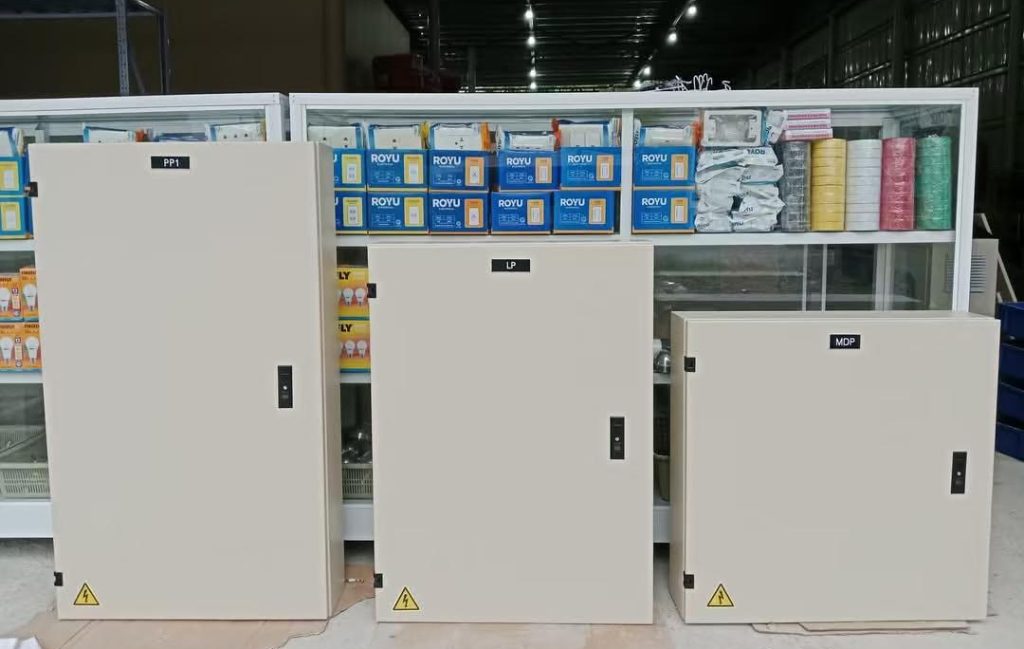
Modern booster station control systems featuring PLC monitoring and remote operation capabilities
Frequently Asked Questions
What is the purpose of a dredge booster pump station?
A dredge booster pump station extends discharge distance by overcoming pressure losses in long pipelines. It allows dredges to maintain efficiency over distances that would otherwise reduce production significantly.
How does a booster pump improve dredging operations?
Booster pumps maintain slurry velocity, prevent settling, and reduce wear on main dredge pumps. They enable higher production rates and make previously unfeasible projects viable.
What sizes do dredge booster pumps come in?
Common sizes range from 10″ to 20″ discharge diameter. Selection depends on your dredge capacity, material type, and pipeline configuration requirements.
How does pipeline length affect dredge pump efficiency?
Efficiency drops significantly beyond 1,000 feet without boosting. Each additional 1,000 feet can reduce production by 15-20% due to friction losses.
What maintenance is required for booster pumps in dredging?
Daily inspections, regular oil changes, bearing lubrication, and scheduled component replacements. Monitoring systems help predict maintenance needs before failures occur.
What is the market outlook for dredge pumps and booster stations?
Strong growth expected through 2033, driven by infrastructure needs and technological improvements. The market shows consistent 5-6% annual growth rates.
Conclusion
Dredge booster stations transform limiting factors into competitive advantages. They extend your reach, increase production, and reduce equipment wear – three benefits that directly impact your bottom line.
Smart operators recognize that booster stations aren’t just accessories – they’re essential tools for maximizing dredging efficiency. Whether you’re planning a new project or optimizing existing operations, these systems deliver measurable returns through increased production and reduced maintenance costs.
The technology continues evolving, with amphibious designs and two-stage systems offering even greater capabilities. Consider your specific project requirements carefully, and invest in quality equipment that matches your operational needs.




